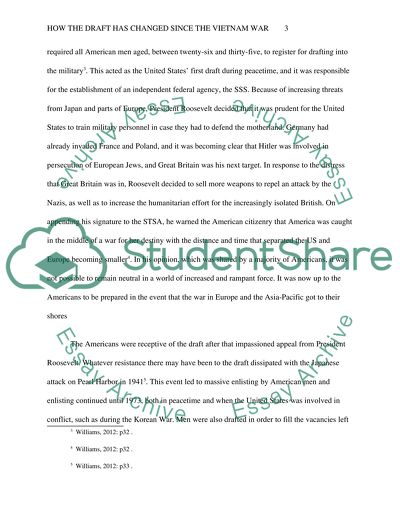Cite this document
(“How the Draft has changed since the Vietnam War Research Paper”, n.d.)
How the Draft has changed since the Vietnam War Research Paper. Retrieved from https://studentshare.org/history/1483878-how-the-draft-has-changed-since-the-vietnam-war
How the Draft has changed since the Vietnam War Research Paper. Retrieved from https://studentshare.org/history/1483878-how-the-draft-has-changed-since-the-vietnam-war
(How the Draft Has Changed since the Vietnam War Research Paper)
How the Draft Has Changed since the Vietnam War Research Paper. https://studentshare.org/history/1483878-how-the-draft-has-changed-since-the-vietnam-war.
How the Draft Has Changed since the Vietnam War Research Paper. https://studentshare.org/history/1483878-how-the-draft-has-changed-since-the-vietnam-war.
“How the Draft Has Changed since the Vietnam War Research Paper”, n.d. https://studentshare.org/history/1483878-how-the-draft-has-changed-since-the-vietnam-war.


